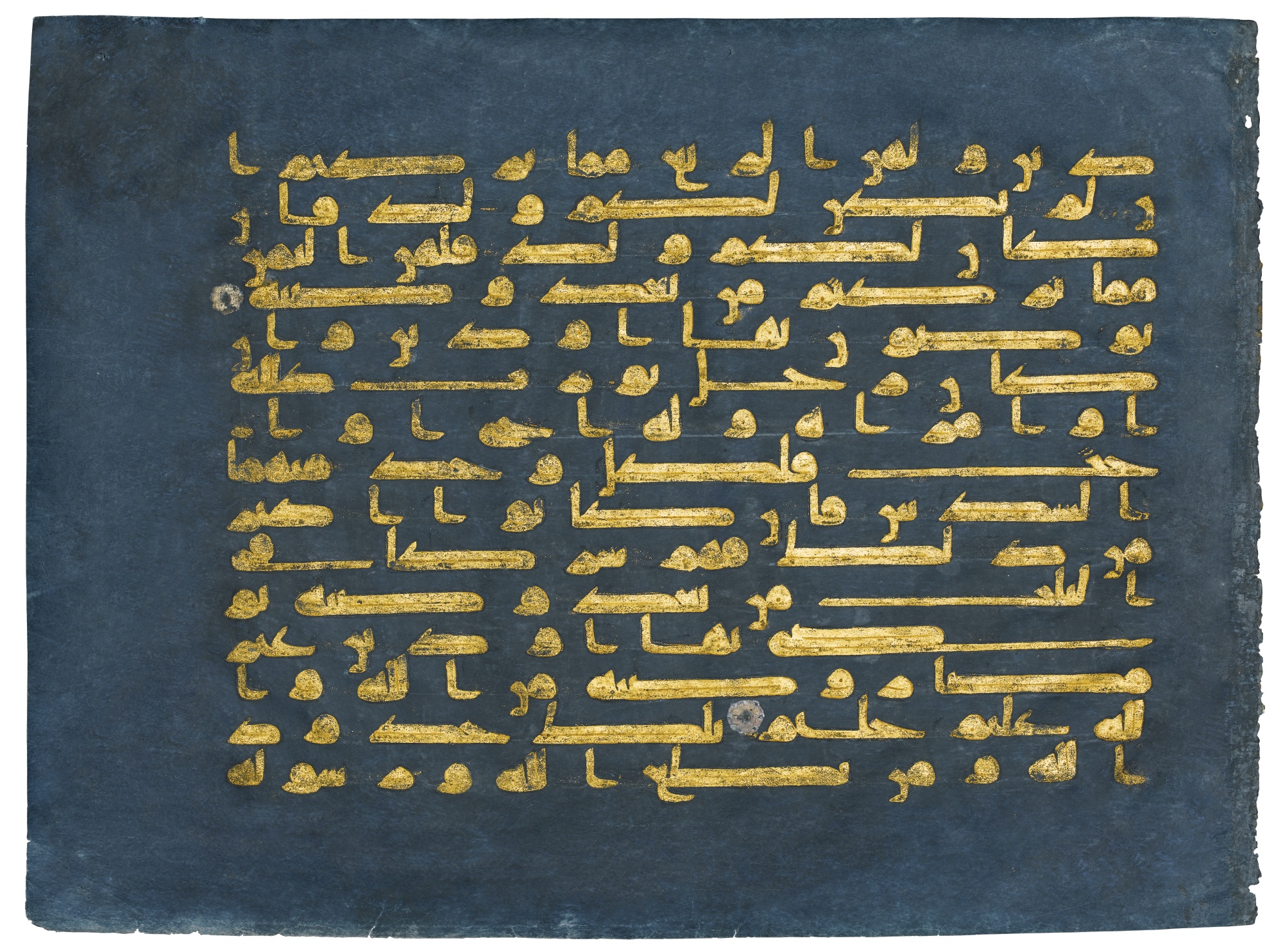Islamic art under the hammer and under pressure?
Photo: A large Quran leaf in gold Kufic script on blue vellum, North Africa or Near East, 9th-10th century, sold for 365,000 pounds in April 2015 / Courtesy Sotheby's
In two months’ time, buyers will be competing for another trove of rare and often beautiful objects in the auction rooms of London. The city’s major auction houses are still finalising the line-up of what will be in their April sales of Islamic art and art from the Islamic world, but some details have already been released.
Among the items on offer at Sotheby’s will be a tortoiseshell, pearl-and-brass scribe’s box from 16th century Turkey carrying an estimated sale price of 300,000 to 500,000 pounds. Also on sale is a rare Quran leaf written in eastern Kufic script, thought to be from Persia or Central Asia and dating to between A.D.1075 and A.D. 1125. It carries an estimated value of 200,000 to 300,000 pounds.
MARKET IN FLUX
But the art market is in an uncertain state. Auctioneers say that while buyers at the top end of the market are concentrating increasingly on unique objects of the highest quality, the middle market is less predictable and depends on an ever-changing group of collectors. In the current climate, an important question is whether the market will be affected by low oil prices and the economic slowdown in the Middle East.
Some are hopeful that demand will hold up. “As far as we can see, the global economic environment and oil prices have minimal effect on the state of the market,” said Oliver White, head of Islamic and Indian art at Bonhams.
Optimists may take heart from the performance of some of the major auctions last year. Bonhams received world-record prices for a number of artists at its Modern and Contemporary Middle Eastern Art sale in October, including Iranian painter Manoucher Yektai and Egyptian artist Mahmoud Moussa. In the same month, Sotheby’s reported record prices for 11 artists at its Contemporary Art Doha auction, which made $7.5 million.
“We saw lively bidding both in the room and from our international phone bidders, demonstrating that our Doha sales consistently draw an international audience,” said Aileen Agopian, an international contemporary art specialist at Sotheby's.
Elsewhere, though, there have been mixed signals. Sotheby’s most recent auction for Arts of the Islamic World, held in London on October 7, raised $5.9 million, slightly below the $6.8 million made at an event on April 22.
Similar amounts have been made at Christie’s. On October 20 its modern and contemporary art auction in Dubai saw $7.2 million in sales. The most expensive item was La Negresse aux Bracelets by Egyptian painter Mahoud Said, which was sold to a private buyer for $665,000.
Earlier in the year, Christie’s Islamic Art Week, which comprised three auctions in London in April, ended with just under $10 million in sales, substantially down on the $17 million from the same event a year earlier.
The results from any individual auction depend, of course, on the quality of the items on sale and can be easily skewed if there is a battle between bidders for particular pieces. Overall auctioneers say that the market appears to be growing following a dip in 2010, largely due to some new collectors entering the field.
However, the dynamics are continually shifting, such as the role played by institutional buyers.
INSTITUTIONAL BUYERS
The Louvre Abu Dhabi is expected to open towards the end of the year and the Guggenheim Abu Dhabi a year later. They are part of a notable building programme of art galleries around the Gulf region that also includes the Museum of Islamic Art and, in Doha, Mathaf: Arab Museum of Modern Art. Such projects have had an impact on the art market in recent years, but that is now starting to taper off.
“Museums in the Gulf states have had some considerable influence on the market in the past, but this is becoming less and less the case as their holdings become sufficient,” said White. He added that the main buyers today are collectors and high-end international dealers, with museums dipping into the market occasionally but only to buy exceptional or very rare items.
It will only become clear in April just how keen active collectors and dealers are to add to their portfolios, and whether demand will continue to buck the wider economic trends.
© Copyright SalaamGateway.com 2016

Dominic Dudley